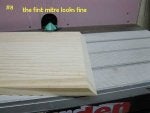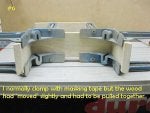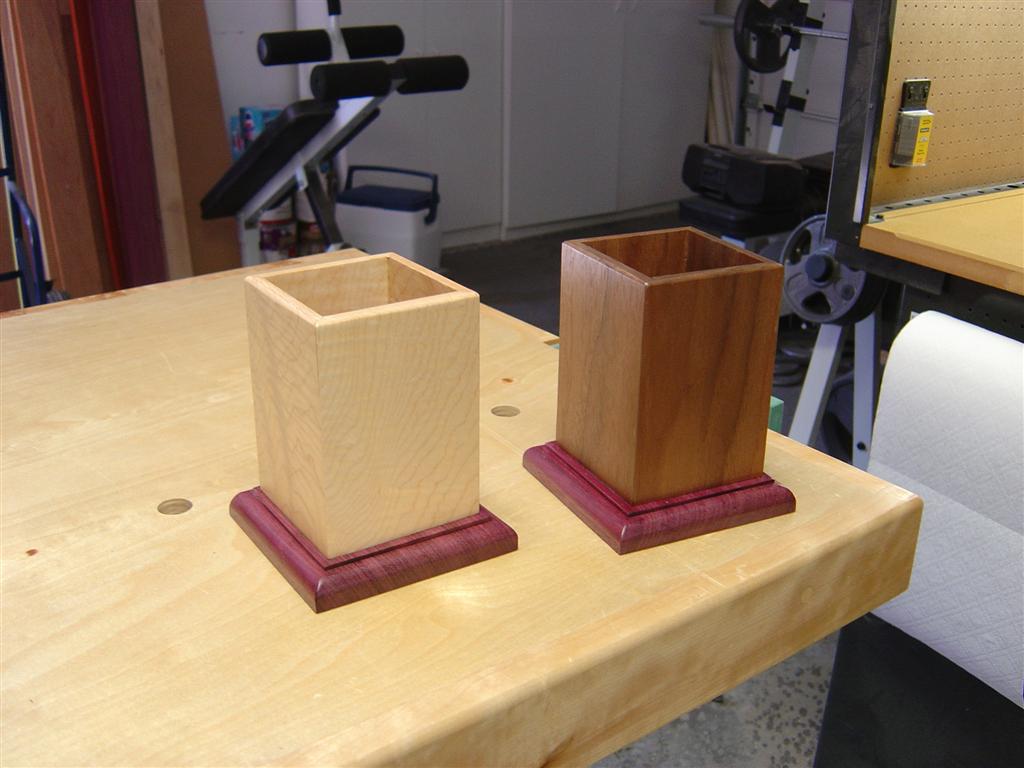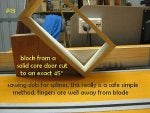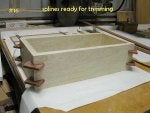My wife, who is very patient and tolerant when I disappear into the shop, asked me to make a pencil holder for her out of some highly figured curly maple that I just got. I’ve decided to make the one that Marc Spagnuolo created in his video (Episode 31 - Pencil Holders | The Wood Whisperer).
The box is formed from ¼” thick maple with mitered edges. Marc uses his TS with the blade set to 45 degrees to cut the miters. Unfortunately, I don’t have a table saw. Two alternatives are the router and the bandsaw. I have a brand new 45 degree chamfer bit that I can mount in my router table. My concern is that I’m routing end grain in a piece of wood on ¼ inch thick. Even with a backer is this tear out just waiting to happen? I could cut the sides longer, route, then cut to size for any tear out at the end of the boards but how about elsewhere along the edge? Maybe route 1/8 inch or less and use multiple passes?
The other alternative is the band saw. The table will tilt to 45 degrees. I checked it with a digital gauge. The only blade that I have is 3/8 inch, 6 TPI that came with the saw. I’m waiting for the riser to come in before I buy more blades. Since I can tilt the table I should be able to saw a 45 degree miter along the edges. I’m very new to band saws and have not done this before. I’ll have to learn sooner or later and I can practice on some scrap first since I’d hate to mess us a nice piece of wood. I already do that way too often.
So, to make a long story longer, in your opinion, which option would you recommend? Also, do you have any other suggestions?
The box is formed from ¼” thick maple with mitered edges. Marc uses his TS with the blade set to 45 degrees to cut the miters. Unfortunately, I don’t have a table saw. Two alternatives are the router and the bandsaw. I have a brand new 45 degree chamfer bit that I can mount in my router table. My concern is that I’m routing end grain in a piece of wood on ¼ inch thick. Even with a backer is this tear out just waiting to happen? I could cut the sides longer, route, then cut to size for any tear out at the end of the boards but how about elsewhere along the edge? Maybe route 1/8 inch or less and use multiple passes?
The other alternative is the band saw. The table will tilt to 45 degrees. I checked it with a digital gauge. The only blade that I have is 3/8 inch, 6 TPI that came with the saw. I’m waiting for the riser to come in before I buy more blades. Since I can tilt the table I should be able to saw a 45 degree miter along the edges. I’m very new to band saws and have not done this before. I’ll have to learn sooner or later and I can practice on some scrap first since I’d hate to mess us a nice piece of wood. I already do that way too often.
So, to make a long story longer, in your opinion, which option would you recommend? Also, do you have any other suggestions?


